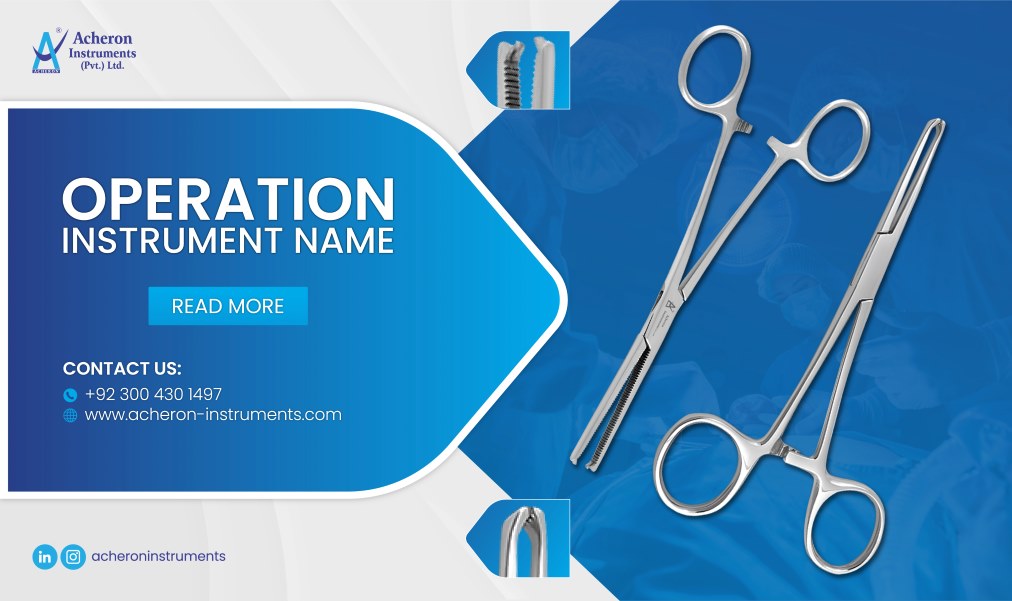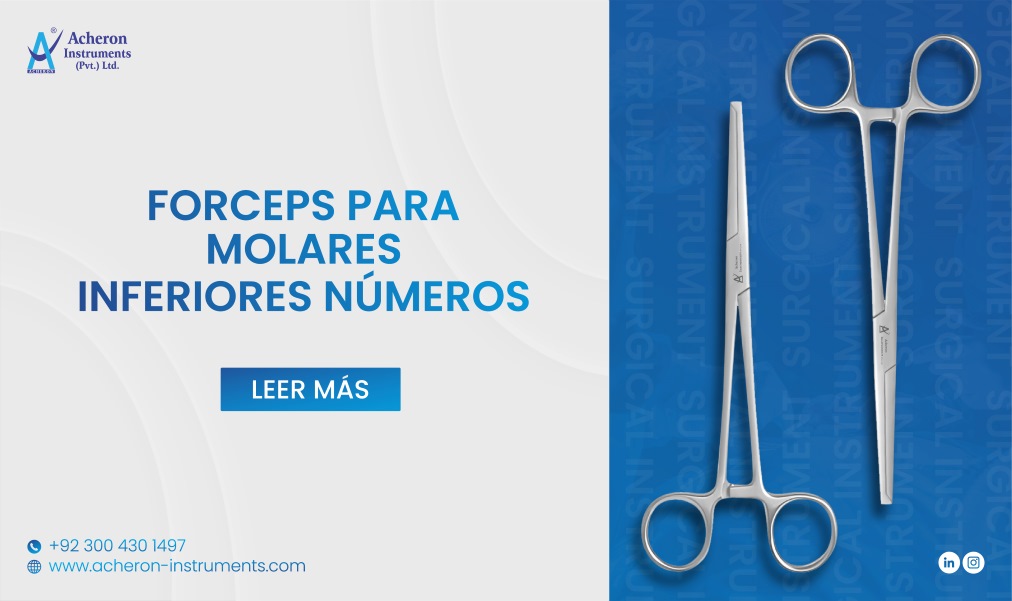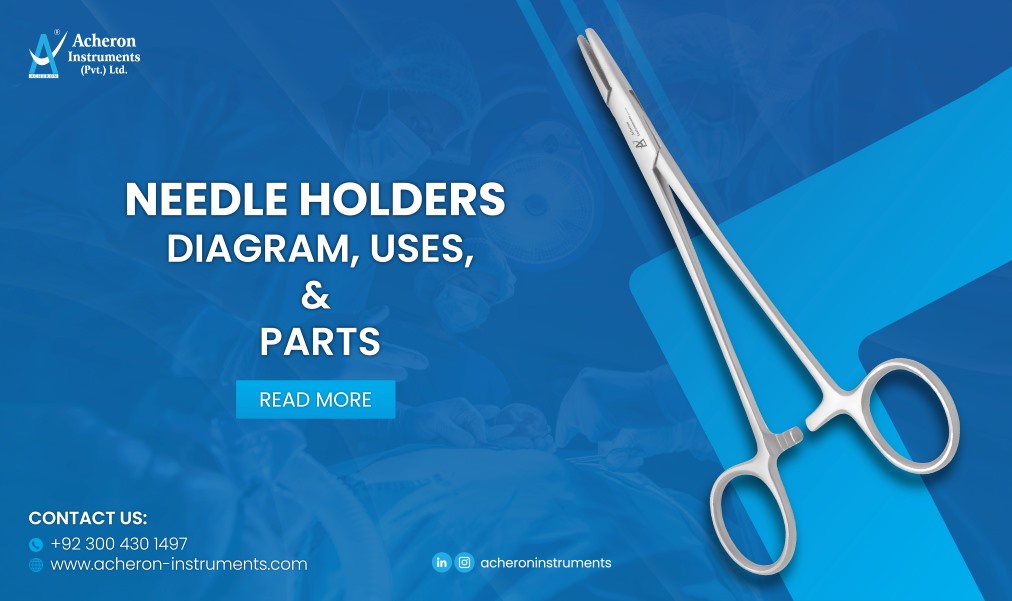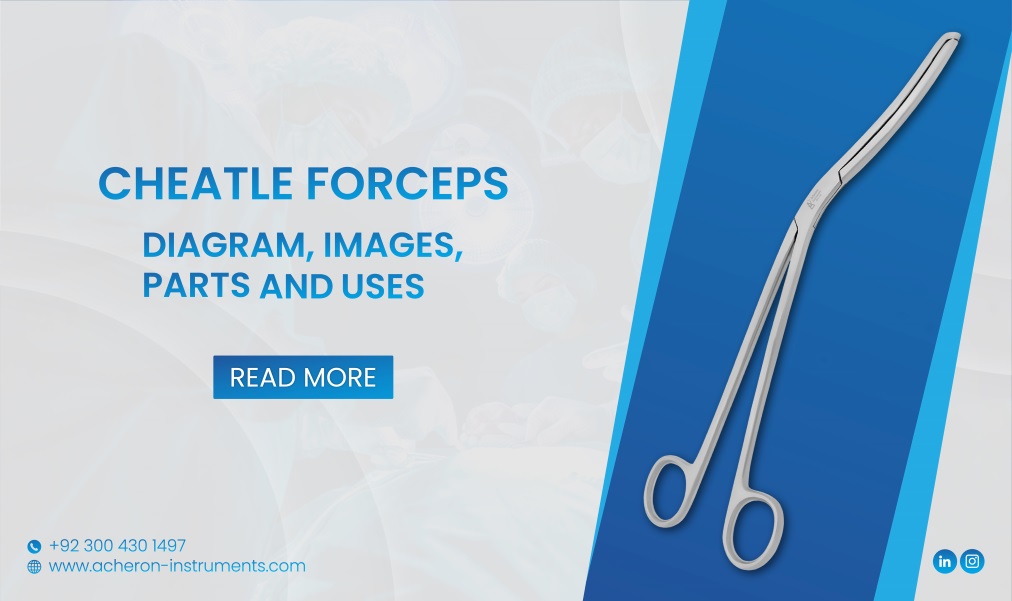
Do you about Operation Instrument Name and their Application? Operation Instruments are the instruments that are used in the operating room to facilitate surgical procedures and save lives. These instruments enable surgeons to smoothly perform procedures like retraction, grasping tissues, dissection, suturing and clamping, etc. These procedures are a must part of every surgery. To perform these tasks, operation instruments stand up and ensure surgical excellence.
Now in the operating room, some operation instruments are used that are general purpose i.e. can be used in every surgery. These include needle holders, forceps, or retractors that are part of every surgery. On the other hand, there are some specialized operation instruments that are designed according to specific requirements of a procedure, like for gynecological procedures episiotomy scissors are a must. Let’s categorize operation instruments according to their function and role in any operation:
Categories of Operation instruments According to Functionality
Operating room instruments are categorized into different categories based on their function:
Cutting and Dissecting Instruments
These are the surgical instruments that facilitate surgeons in cutting and dissecting skin tissues and even bones. They assist in incising, dissection, and excising tissues during surgical procedures. These types of instruments include scalpel blades, Scissors like Mayo Scissors, iris scissors, curettes, and Osteotomes.
Examples: Curved Metzenbaum scissors, Mayo Scissors, Sims Uterine Curette, and more.
Want to learn more about Scissors? Read Types of Scissors for Surgery and Their Significance.
Clamping and Occluding Instruments
These surgical instruments enable surgeons to control and obstruct the blood flow during surgeries. They simply assist surgeons in achieving hemostasis for obtaining a clear surgical field for smooth surgical operations.
Examples: Clamps like Kocher Clamp, Curved Kelly Clamp, Crile Hemostatic Forceps, Mixter Forceps, and more.
Grasping and Holding Instruments
These operating room instruments assist surgeons in grasping and holding delicate tissues, and organs and stabilizing tissues. To serve this purpose, surgeons commonly use forceps that not only grasp the tissues but some forceps also help in tissue manipulation.
Examples: Tissue Forceps, Adson Tissue Forceps, Allis Forceps, Debakey Forceps and more.
Probing and Dilating Instruments
Probing instruments are blunt, malleable, and wire-like instruments to assist surgeons in exploring a structure, opening, or tract. Dilating instruments assist surgeons in enlarging and widening openings in various medical procedures inserting an instrument or opening a stricture.
Examples: Hank Dilator, Van Buren Dilators, Hegar Uterine Dilator, or more dilators.
Retracting and Exposing Instruments
Retraction is a fundamental procedure in every surgical procedure. Retracting instruments enable surgeons to hold back tissues and organs to have a clear view of the surgical site. These retracting instruments are termed as retractors which are both handheld like the Senn Retractor and self-retaining like the Gelpi Retractor.
Examples: Green retractor, Hohmann Retractor, and Kelly retractor, etc.
Suctioning and Aspiring Instruments
Suctioning and aspirating instruments play a vital role in dental and surgical settings in obstructing or removing fluids or blood. These instruments assist surgeons in obtaining a clear surgical field by clearing these fluids from the surgical site.
Examples: Frazier Suction Tube, Yankuer Suction Tube and Poole Suction Tube, etc.
Suturing and Stapling Instruments
Stapling and Suturing instruments are instruments to assist surgeons in ligating, repairing and approximating tissues during a surgical procedure.
Examples: Needle holders like Crile Wood Needle Holder, Mayo Hegar Needle Holder
Improved Vision Instruments
These instruments ensure optimal vision of the internal structures or cavities not visible externally. For this purpose, visualizing tools such as endoscopes, anoscopes, speculums, and endoscopic cameras can be used.
Examples: Nasal Speculum, Endoscope and Endoscopic Camera
These are the essential and basic surgical instruments used in the operating rooms without which surgery can’t be possible. Let’s explore some common surgical instruments that are a must-have in every surgical instrument:
Common Instruments in an Operating Room
Scalpel Blades
Scalpel blades are essential instruments in almost every surgical setting that assist in initial incision and tissue cutting. They are available in different sizes and shapes and are assigned numbers or codes accordingly. Surgeons refer to these scalpel blades with the help of these blade codes. Let’s have some common scalpel blades:
|
Blade# |
Shape |
Description |
|
#10 |
Large Broad Blade with a Curved Cutting Edge. |
Used for making large incisions in surgeries like laparotomy. |
|
#11 |
Triangular shape with a pointed tip. |
Used for making precise and angled precisions. |
|
#15 |
Small curved blade with a short cutting edge. |
It is a smaller version of scalpel blade# 10 that helps in making fine incisions. |
Surgical Forceps
Forceps are used to grasp and hold tissues and organs to assist surgeons in fine tissue manipulation. It helps in having a closer view of the surgical site by holding tissues. Some commonly used forceps include Adson tissue forceps, Russian Forceps, or Bonney Forceps as well.
|
Forceps |
Description |
|
Adson Brown Tissue Forceps |
Aids in grasping and manipulating thick and coarse tissues. |
|
Helps to grasp, hold and manipulate surgical sponges. |
|
|
Russian Forceps |
Assists to grip and manipulate delicate tissues. |
|
Cheatle Forceps |
For secure grasping and manipulation of tissues. |
Clamps
Clamps are locking forceps that obstruct or control blood flow to achieve hemostasis for a clear surgical field. These are essential parts of surgeries that involve dissection and need blood flow control. Some common clamps are:
|
Clamp |
Description |
|
Allis Tissue Forceps |
Supports grasping, holding, and clamping blood vessels. |
|
Debakey Vascular Clamp |
Temporarily blocks the blood flow in major cardiothoracic vessels. |
|
Kocher Clamps |
Offers blood flow control during cardiovascular and general surgeries. |
|
Curved Kelly Clamp |
Aids in blood vessels manipulation, clamping lumen and blood flow control. |
Surgical Scissors
Surgical Scissors play different roles during surgery in the operating room. They assist in cutting gauze, and dressings as well as are used for the dissection of delicate tissues featuring curved or straight jaws.
Examples: Mayo Scissors, Iris Scissors, Metzenbaum Scissors, and many more.
Needles and Sutures
Needles and sutures are fundamental tools in any surgical setting. Needles come in various sizes with conventional or non-conventional tips to suit multiple applications. But on the other hand, Sutures can be absorbable and non-absorbable and available in different sizes.
To handle needles and sutures, needle holders are used that are available in different sizes to accommodate different surgical settings.
Retractors
Retractors assist in holding back tissues and organs to provide access and clear visualization to the surgical site. They are available in both settings either handheld or self-retaining. Some examples include:
|
Retractor |
Description |
|
Breisky Retractor |
Aids in retraction during gynecological procedures. |
|
Green Retractor |
Helps to grasp, retract and manipulate delicate tissues during procedures involving thyroid, gland, neck and small objects. |
|
Kelly Retractor |
It is a hand-held retractor that assists in keeping your wounds open. |
|
Rake Retractor |
Assists in retraction of soft tissues for a clear surgical site. |
These are the most commonly used operating instruments or operation instrument names used in the operating room.
Where to Buy High-quality Operating Instruments?
Acheron Instruments is a leading surgical instruments manufacturer company that offers high-quality surgical instruments at cost-effective prices. Our Instruments are made from high-quality German stainless steel that ensures durability, corrosion resistance, and affordability without compromising on quality.
Conclusion
Operation instruments are the instruments used in the operating room without which can’t imagine a surgery. They play a vital role in saving someone’s life and ensuring successful results. Here we discussed the most common operation instrument names including retractors, forceps, needle holders, scissors, scalpel blades, and clamps. These are the most important instruments for any surgical setting each serving its purpose.
FAQS
How do surgical instruments ensure patient safety during surgery?
Surgical Instruments play a vital role in ensuring patient safety during surgery. They ensure precision and minimal trauma to the patient to achieve safe outcomes. The right choice and use of surgical instruments are necessary to achieve the outcomes.
From what material, these surgical instruments are made?
Surgical Instruments are made of German Stainless Steel to ensure high quality, durability, and precision. Stainless steel ensures that instruments are long-lasting and easy to sterilize.








